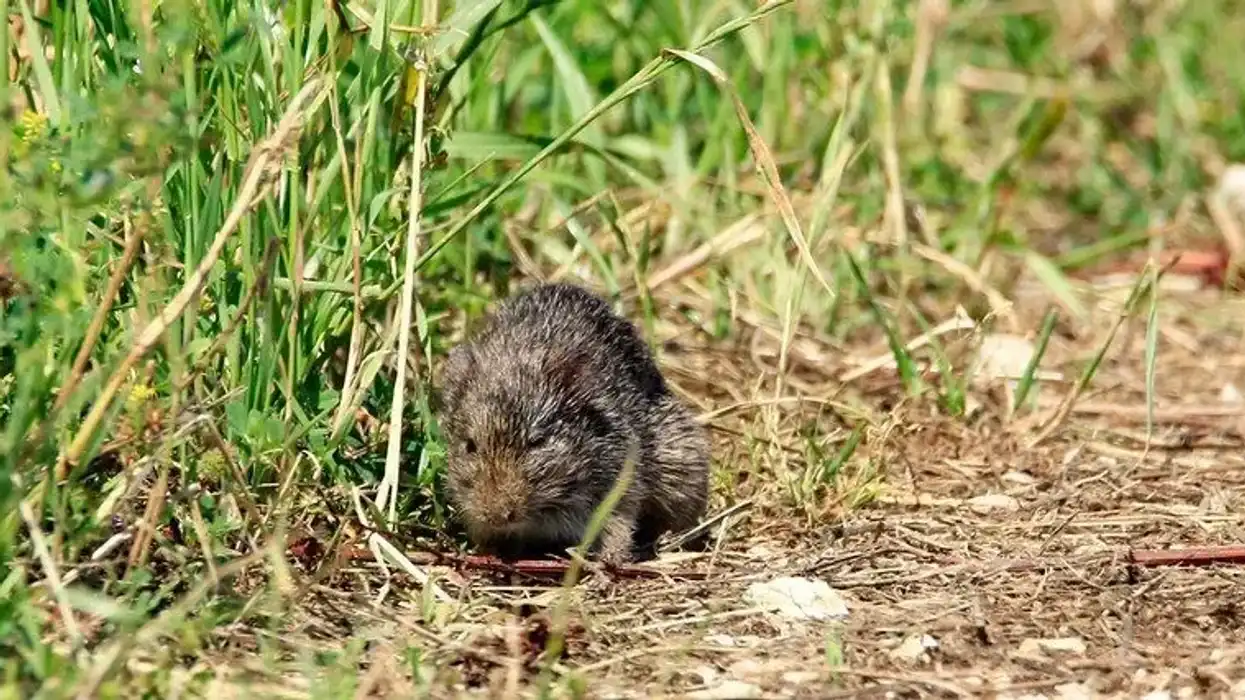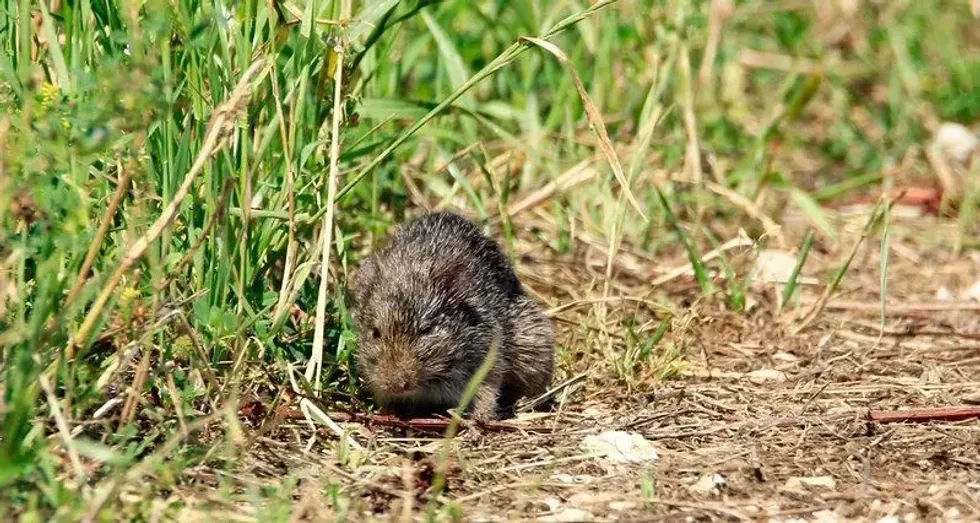The ricefield rat (Rattus argentiventer), found throughout Southeast Asia, is a species of rat.
Rice field rat lives in large groups which you will find, always has a high-ranking female and a dominant male to steer the groups. Ricefield rat location includes places in Southeast Asia including Thailand, Peninsular Malaysia, Indonesia, the Indochina region, New Guinea, and the Philippines.
Rice field rat (Rattus argentiventer) spend their time and nesting process in rice fields, whereas other species, even in the genus Rattus, may stay in open plains. During the day, R. argentiventer stays among weeds, vegetation, and maturing rice paddies.
At night, these field rats feed with the highest activities and move during dusk and dawn. You will also find rice field rats in cultivated grasslands with soft and yellow-brown/black fur, gray-colored bellies, and medium-brown tails. Staying in large groups, these rice field rats have strict hierarchies among them.
The leaders control the rodents in the group and individuals will always defend the group against others. It is in their behavior.
You won't find a ricefield rat endangered as the distribution is quite large and large populations of this species are found in the range the rice field rat inhabits. People might confuse the rice field rat with the lesser ricefield rat which is quite similar.
The lesser rice field rat is also from the same family Muridae of mammals and order Rodentia and is found in China, Taiwan, Thailand, Laos, and Vietnam.
Did you know that the scientific name Rattus argentiventer was given by Robinson and Kloss in 1916 when they discovered the species? Yes, Herbert Christopher Robinson and Cecil Boden Kloss were the ones to give the binomial name to this species of rice field rats.
Ricefield Rat Interesting Facts
What type of animal is a ricefield rat?
Rice field rat or Rattus argentiventer is a species of rat found in Southeast Asia in rice paddies and cultivated areas.
What class of animal does a ricefield rat belong to?
Rice field rat (Rattus argentiventer) is a rodent pest found in rice fields that fall under the class of Mammalia in the family Muridae and order Rodentia in the kingdom of Animalia.
There are many species of rice field rats found in the world and not just a single species. We know at least four species of rice field rats including the rice field rat (Rattus argentiventer), the lesser rice field rat (R. losea), Ranjini’s field rat (R. ranjiniae), and the pale field rat (R. tunneyi).
How many ricefield rats are there in the world?
The exact population of the species Rattus argentiventer is not known, however, the range of these rats is quite big with large numbers in Malaysia, Indonesia, Thailand, the Philippines, and more.
There is currently no threat to these rats as they are found commonly in rice fields and other cultivated areas where control of these rodent pests of agriculture is actually needed.
Rice field rats have also been seen living in burrows apart from the open fields. See them in tropical crops.
Where does a ricefield rat live?
A ricefield rat habitat includes cultivated areas like grasslands and rice fields. Rattus argentiventer rats are fully dependent on human plantations and rice fields. They stay amidst plant areas and crops are really active in the feeding in the region. This is why this species of rats are considered a rodent pest and the distribution is also quite widespread.
Tropical savanna and grassland are the major habitats of this species of rats where they stay above land or in burrows. This rodent species is seen sheltering in burrows in the soil, near crops, in logs, and under rocks. Often in burrows, the rodents make nests from some hollowed-out heaps of material.
What is a ricefield rat's habitat?
These rodents are found in Southeast Asia which includes areas of the Indochina region like Thailand, the Philippines, Peninsular Malaysia, Indonesia, and New Guinea. They are rodent pests in these areas.
Many people use these rodents as food with many cultures feeding on these rats seen in Vietnam and Cambodia. Traps are set above ground to catch these rodents as they come out of the burrows when the rain comes and food diminishes.
The family called Muridae and genus Rattus has three more species of these rodents apart from Rattus argentiventer.
Who do ricefield rats live with?
These mammals live in large groups and these groups have a social hierarchy with dominant males and some high-ranking females. Young are kept in the same groups of mammals and protected by other rats from animal attacks.
How long does a ricefield rat live?
The lifespan of a rice field rat is not known.
Usually, pet rats live for about six to seven years. However, on average, rats die pretty young as the lifespan of a rat ranges between two to three years.
How do they reproduce?
A continuous breeding season is seen with this species and reproduction is common all over the range. In the reproduction season, you will see four to five days of estrus. The gestation period is about three weeks.
Male and female ricefield rats follow their procedure of reproduction and female gives birth to a range of three to eight young in a litter and there can be from one to twelve litters in a year. Just three to five days before parturition, females build the nests.
Full fur is seen on the bodies of the young, however, they are born naked and blind. Only after 15 days, do they open their eyes.
The young leave the control of the parents and the nest after three weeks. Sexual maturity is reached in only three months.
What is their conservation status?
The conservation status of rice field rats is categorized to be of Least Concern by the IUCN Red List. There is no problem with the population of this species as the range is quite large and they are found abundant in plant and vegetation areas.
Schistosoma spindale are parasites of rice field rats.
Ricefield Rat Fun Facts
What do ricefield rats look like?
Ricefield rat appearance is quite similar to other rats, but the said rat has a fairly larger body. Rice field rat is medium-sized and has a yellow-brown and black pelage. The body is soft with a gray belly and white flanks. The rat has a medium brown tail.
How cute are they?
Rats are usually not considered cute by the masses. And as the species is a rodent pest, they are more problematic for your crop farms than being cute. In all of its range, the rat causes problems and needs control.
How do they communicate?
During aggressive encounters, these rats' behavior stands out as they have a vocal repertoire that consists mainly of squeals and whistles.
They also communicate tactically and chemically.
How big is a ricefield rat?
The length of the body is 12-16 in (30.4-40.6 cm) which also includes the tail of length between 6-8 in (15.24-20.32 cm).
How fast can a ricefield rat move?
The speed is not known. However, rats are quite quick.
How much does a ricefield rat weigh?
The weight ranges between 0.21-0.48 lb (97-219 g).
What are the male and female names of the species?
Males and females are not given different names.
What would you call a baby ricefield rat?
A ricefield rat baby is called a young.
What do they eat?
Ricefield rat diet includes grasshopper, termites, insects, snails, seeds, vegetables, nuts, rice, and fruits.
They feed during the night and are active during dusk and dawn. During the daytime, they stay hidden in the crop and this is why control is needed.
Are they dangerous?
They can be dangerous to your fields and rice paddies. They are highly dependent on the crop fields where they make burrows and live.
Would they make a good pet?
They are not considered pets in the community. However, there are some rat species that are used as pets and loved by all.
Did you know...
In California, you will mostly find the Norwegian brown rat and the roof rat. This is very common throughout Northern California.
Are ricefield rats endangered?
They are found abundant in the world.
What adaptations do ricefield rats have?
Rice field rats make whistling and squealing sounds when threatened and this is quite unique to the species.
*We've been unable to source an image of a ricefield rat and have used an image of a black rat instead. If you are able to provide us with a royalty-free image of a ricefield rat, we would be happy to credit you. Please contact us at hello@kidadl.com










